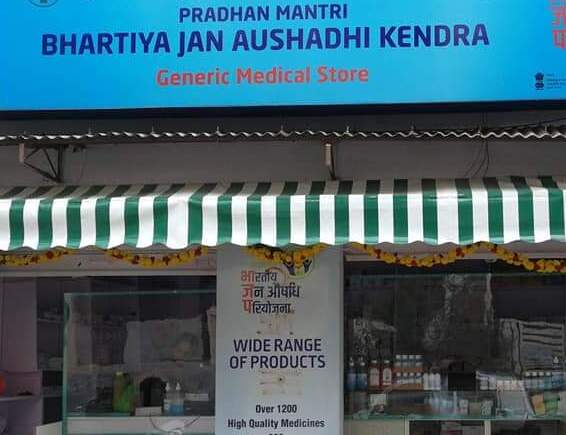Nagaland is a landlocked state in the northeastern region of India, sharing its domestic boundaries with Assam to the west, Arunachal Pradesh to the north, and Manipur to the south, while also bordering Myanmar to the east. According to the 2011 Census of India, the state has a population of approximately 1.98 million and is home to 17 major tribes and several sub-tribes, each with its distinct languages, cultural practices, and social structures, which contribute to the state’s vibrant social fabric and shape its identity. While these diverse communities enrich the state’s cultural landscape, they also present unique governance and service delivery challenges due to their distinct customs, dispersed settlements, and the rugged terrains of the state. These have reflected in major infrastructural gaps in the state, particularly in the area of access to quality healthcare and education, especially in rural and remote regions. However, in the last decade, with the rise of the Modi government, a renewed focus was placed on the northeastern states, marking the beginning of a new era of integration and development. In this context, healthcare emerged as one of the central pillars of the government’s strategy for improving the lives of Nagaland’s residents.
Healthcare in Nagaland
Nagaland’s healthcare system has historically faced significant challenges, including inadequate infrastructure, a shortage of skilled medical professionals, and limited access to essential services, particularly in rural areas. Furthermore, decades of militancy and counter-militancy by state forces have left the region’s healthcare system deeply fragile, rendering several district hospitals non-functional. According to 2018-19 rural health statistics, Nagaland was the only state in Northeast India with an insufficient number of rural Primary Health Centre (PHC) buildings (Gogoi, Hazarika & Gogoi, 2021).
Key healthcare projects in the last decade
However, the narrative seems to be changing with the last decade witnessing several key initiatives aimed at transforming the state’s healthcare landscape. In particular, the year 2017 saw the launch of four major projects by the state’s Department of Health & Family Welfare, aimed at improving the healthcare delivery system in the state (The Morung Express, 2017). The first of these was the ‘Nagaland Health Project’, which focused on providing quality health services in the state by strengthening health infrastructure and promoting community engagement. The second project, ‘Malaria Elimination Initiative’, was launched to reduce and eventually eliminate malaria through enhanced surveillance and effective treatment, as well as through effective partnership with different sectors like agriculture, fishery, education, municipal corporations, media, community stakeholders, and more. On the other hand, the ‘Rashtriya Swasthya Bima Yojana’ (RSBY) was designed to provide financial protection to below-poverty-line (BPL) families by offering affordable health insurance coverage for hospitalization and medical care through all district-run hospitals, as well as seven private hospitals in the state. Finally, ‘Jan Aushadhi’ aimed to make essential medicines accessible to the public at an affordable cost by establishing a network of retail shops in all district-run hospitals across the state.
Nagaland Health Project
Among these, the Nagaland Health Project (NHP) stood out as the first-ever state-level project to be funded by the World Bank. With a joint investment of $48 million by the World Bank and $12 million by the Government of India, this milestone project aimed at enhancing the quality and accessibility of healthcare services in the state through its dual components of ‘Community action for health and nutrition’ and ‘Health system development’ (The Morung Express, 2024). By the end of the project in 2024, the World Bank had published significant changes observed in the state’s healthcare landscape, a section of which is presented in Table 1.
| Indicator | Baseline Percentage
(1.2.2017) |
Current Percentage
(15.4.2022) |
| Targeted health facilities with at least one functional handwashing facility with running water | 31.00 | 98.40 |
| Female children under one year registered for immunization in targeted communities, whose growth was recorded at least twice in the previous six months | 6.00 | 74.00 |
| Children ages 9-11 months registered for immunization in targeted communities who have received all recommended immunizations | 40.00 | 69.00 |
| Female children aged 9-11 months registered for immunization in targeted communities who have received all recommended immunizations | 40.00 | 70.40 |
| Mothers who delivered in the previous 6 months in targeted communities who had at least four antenatal care check-ups | 21.00 | 40.00 |
| Children under one year registered for immunization in targeted communities whose growth was recorded at least twice in the previous six months | 6.00 | 72.60 |
| Community health workers (ASHAs) in targeted communities were supplied with complete kits | 0.00 | 90.00 |
Table 1: Data obtained from ‘Project Development Objective Indicators’, Nagaland Health Project (P149340), The World Bank.
The success and transformation brought by the Nagaland Health Project hinged on a few key features of the project (World Bank, 2024):
- Encouraging community ownership: In line with the first component of the Nagaland Health Project, which focuses on community action, a significant advancement in improving Nagaland’s healthcare was encouraging local communities to take charge of their health services. Over 500 village health committees were constituted, with a woman mandatorily serving as the co-chair. In this way, factors like maternal and child healthcare, care of pregnant women, and care for the elderly could be brought to the forefront.
- Enhancing medical education: To address the long-standing shortage of healthcare professionals, Nagaland initiated key reforms in nursing and midwifery education by training the faculty members in both their instructional skills and their ability to implement innovative teaching strategies in addition to infrastructural developments. As a result, there has been a rise in enrolment in the state’s nursing schools, allowing more healthcare workers to pursue training (World Bank, 2024).
- Providing a reliable power supply: The project also tapped into cost-effective and innovative options such as solar energy to address the challenge of unreliable electricity supply in some remote corners of the state. According to the World Bank (2024), solar plants were installed in 175 health facilities, providing a stable supply of electricity. This has ensured round-the-clock availability of essential medical services, smooth functioning of electronic machines, and proper storage of important medicines and vaccines in the refrigerator.
- Increased accessibility to diagnostic services: The burden on patients to travel long distances to avail medical facilities, and in particular to take simple medical tests, was significantly reduced through the provision of diagnostic equipment at several district labs. For instance, the diagnostic services made available at the PHC in Chunlikha, located 58 kilometers from Kohima, now serve ten nearby villages and cater to a population of over 15,000 residents, thus saving them precious time, money, and energy.
- Regulation of sanitation and waste management: To address the challenge of water scarcity in health facilities, the Nagaland Health Project introduced rainwater harvesting systems. This initiative has enabled the collection of approximately 70–80 lakh litres of water annually, supporting the daily operational needs of 176 health facilities across the state. The increased water availability, combined with a more effective biomedical waste management system, has significantly improved sanitation and hygiene practices in the state.
- Introducing digital interventions: The project also enhanced digital inventory management for drugs and medicines across all warehouses and healthcare facilities, allowing real-time visibility, aiding in better supply planning, and reducing stock-outs.
Conclusion
Within seven years, the Nagaland Health Project has sparked visible improvements in the state’s health system, laying the foundation for lasting change. What was once considered one of the most underserved regions is now showing how strategic health investments, community engagement, and digital innovations can bring even the most remote populations forward. Nagaland’s progress is a powerful reminder that with the right governance and support, transformation is within reach.
The views and opinions expressed here belong solely to the author and do not reflect the views of BlueKraft Digital Foundation.







